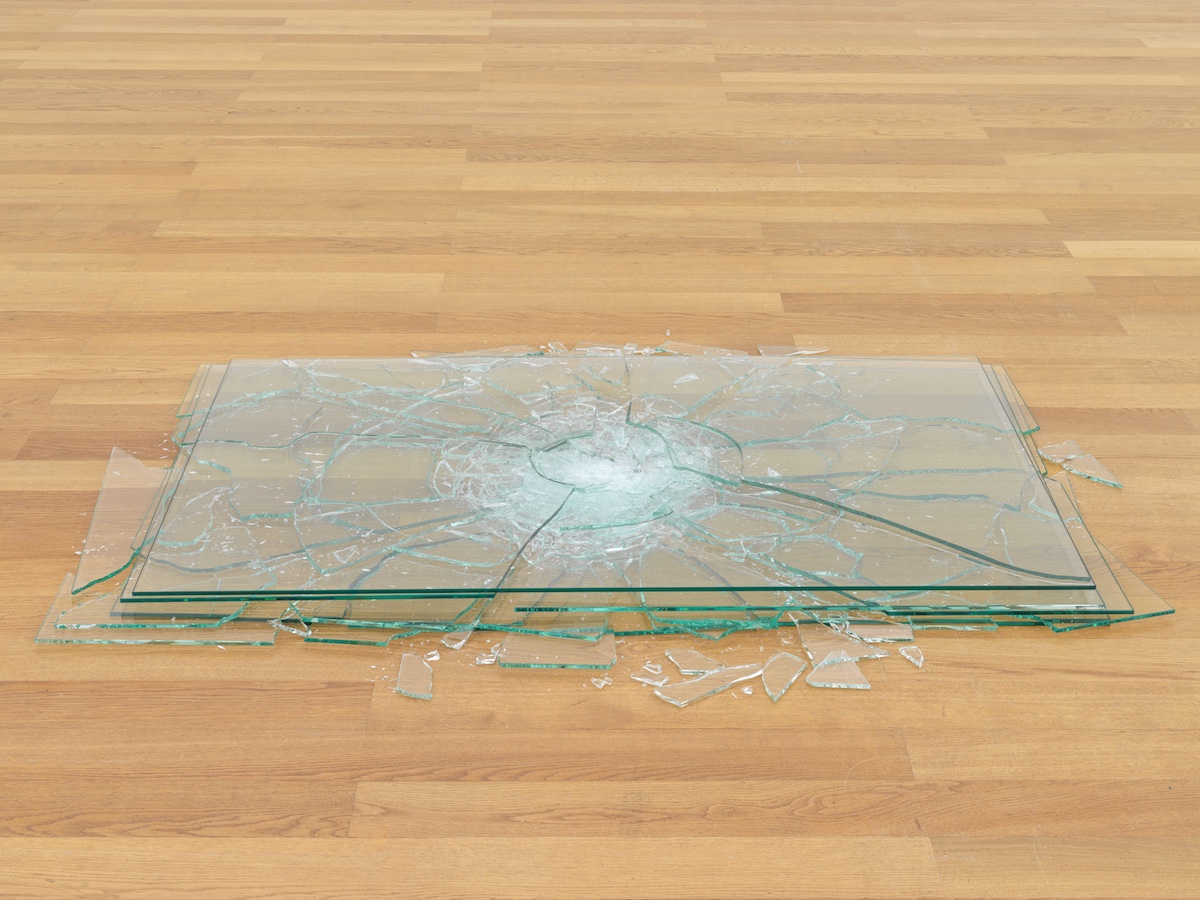Glass, 5 sheets, 91.5 x 151.5 cm, overall dimensions variable
Kunstmuseum Liechtenstein, Vaduz / former collection Rolf Ricke at the Kunstmuseum Liechtenstein, Vaduz, Kunstmuseum, St. Gallen, Museum für Moderne Kunst, Frankfurt am Main
On Center Shatter-or-Shatterscatter (Within the Series of Layered Pattern Acts) is a radical work – today as when it was first exhibited in 1971. Approaching the piece, viewers see smashed sheets of glass with spider web–like cracks, lying stacked on top of each other. The fact that the top sheet is not smashed usually goes unnoticed at first sight. Barry Le Va was fascinated by Sherlock Holmes' keen powers of observation and clear deductions.
The verbs in the title provide the first clues to how the piece was created: shattering on centre or scattered shatter. Thanks to this tongue-twisting string of verbs, you can almost hear the action being performed when you say the title out loud. The tool that Le Va used to make the piece was a sledgehammer. To begin with, the first pane is smashed, then the second, third and fourth. What is destroyed is the closed form that was so crucial to the artists of minimal art (1960s): it is resolved into countless small and large particles. The final fifth act serves to preserve the state.
Because the energy is transferred and spreads so incredibly quickly due to the material properties of the glass, the powerful blows create web-like fracture patterns. In the end, the form "paints" itself. In this way, Le Va factors both the process of disintegration and the laws of physics into his work. In his notes and interviews he often mentions cause and effect. What is more, like many of Le Va's works, this piece too speaks of the absence of the body – the viewer is invited to read the traces of the preceding process.
Christiane Meyer-Stoll
"For example, if a sheet of glass is dropped and a sheet of glass is thrown they will have two different kinds of dispersal patterns or effects which you can trace back to their cause. Much of the work had to do with making distinctions like that. That this lies the way it lies is because of doing this activity from this position. That would be the only aesthetic."
Barry Le Va
Quoted in Nick Kaye, Art into Theatre: Performance Interviews and Documents, Amsterdam, vol. 16, 1996, pp. 41–55, here p. 42.
